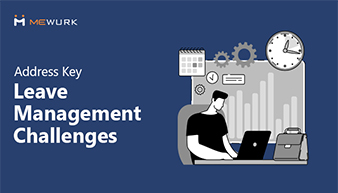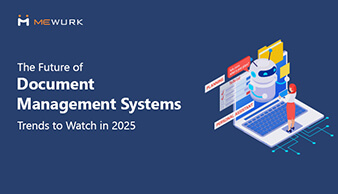
Imagine this - You are a growing company, and one of your star employees has applied for leave. But due to the manual process, and miscommunication, the approval was delayed. In this scenario, the employee is frustrated, and an unsatisfied employee can lead to a hit in productivity, and the HR team is running around like a headless chicken to fix the error. This common scenario shows a key problem: poor leave management.
Without a streamlined system, even well-intentioned companies can have dissatisfied employees, legal risks, and inefficiencies. So what can you do to avoid these pitfalls? This is where a Leave management system comes into play. A reliable leave management system is key. It prevents issues and ensures smooth operations. Without a streamlined system, even well-intentioned companies can have dissatisfied employees, legal risks, and inefficiencies.
What is a Leave Management System?
A Leave Management system is software that automates employee leave tasks. It includes Travel Leave, Casual Leave, Sick Leave, and other time off requests. This system streamlines the entire process, from applying for leave to tracking and approval. It ensures the organization maintains an accurate record that complies with the labor laws.
Traditionally, leave requests were managed using spreadsheets, paper forms, or emails. However, these methods are prone to errors, delays, and miscommunication. A Leave Management software eliminates these bottlenecks. It offers a central platform for employees to manage their leaves.
Why is the Employee Leave Management System important?
The Employee Leave Management System is the core component of any HR workflow. It helps companies track and manage employees' time off. This affects payroll, personnel management, benefits, and employee engagement.
- Compliance Adherence : Labor Laws vary by country and region, requiring companies to manage leave privileges correctly. Remember, failing to comply with these regulations can lead to hefty fines or in some cases even legal actions. Reliable leave management software makes sure that the organization is complying with the correct leave policies by automating the calculations of leave balance, and adhering to the labor law and compliances.
- Prevent Miscommunication : Employees and bosses can become confused when using manual procedures. By guaranteeing that all leave-related documentation is centralized, an automated system enhances clarity and minimizes miscommunication.
- Boosts Employee Satisfaction : Workers appreciate that the process for approving leaves is transparent. Employees benefit from a more efficient system that allows them to view their leave balances and guarantees prompt and equitable processing of their requests, which fosters more confidence and increases job satisfaction.
How Does Leave Management Software Work?
A leave management software simplifies and automates the entire leave process, typically following these steps:
- Leave Request Submission : Employees can apply for leave requests online using the employee leave management system or mobile app, specifying the type of leave and the duration.
- Leave Approval Workflow : Once the request is submitted, the software automatically routes the request to the appropriate person for approval. Then the managers can approve or deny the request based on the team’s workload and leave balance.
- Leave Balance Calculations and Tracking : The system will automatically calculate the leave balance after the approval process. It keeps track of the different leave balances including sick leave, personal days, and annual days and ensures that the remaining leave balance is accurate.
- Real-Time Reporting : Management and HR teams can generate real-time reports from which they can analyze the leave patterns, absentee rates, and much more. This will ensure that the number of leaves taken by employees is correctly reflected and calculated in the salary, especially the unpaid leave.
- Payroll Integration : Some advanced systems can also be integrated with the payroll management system. This will help when the number of taken leaves are directly & accurately reflected in the salary calculations, especially for unpaid leaves.
This outlines the general workflow of the leave management process. With a clear understanding of how the system functions, let’s now explore the key metrics that highlight the importance of an effective leave management system.
What are the Key Benefits of a Leave Management System?
An effective leave management software offers numerous benefits for both the organizations and employees. Here are some of the key benefits of utilizing the employee leave management system.
- Streamlined Process : Automating the leave process will reduce the overhead on the administration by removing the manual tracking. Employees can apply for leave and managers can approve the leave within seconds.
- Enhanced Accuracy : An automated leave management system will ensure accurate leave balances and payroll deductions. Transparency in the leave process is important, Errors in the leave calculations can lead to payroll issues and unsatisfied employees.
- Legal Compliance : A good leave management system will ensure that the organization is adhering to the labor laws of the country avoiding penalties for mismanaging leave entitlements.
- Data-Driven Insights : HR teams and managers may make well-informed decisions on the distribution of tasks and staffing by utilizing real-time analytics on workforce availability, leave trends, and employee absenteeism.
- Increased Employee Satisfaction : Employees appreciate transparency & efficiency when it comes to leave requests. An easy-to-use system ensures that their leave is processed without unnecessary delays.

9 Signs It’s Time to Upgrade a Leave Management System
If your current process for managing employees feels outdated or inefficient, it might be time to upgrade. Here’s the breakdown for the indicators to look for which says it's time to switch to a modern Leave Management System.
1. Manual Tracking is Error-Prone : Relying on Spreadsheets, emails, or paper forms to manage leave requests increases the likelihood of errors such as double entries, miscalculations of leave balances, and incorrect leave approval. These manual processes are not only time-consuming but can also create room for error. These mistakes can lead to mistakes in payroll, misunderstandings, and non-compliance with the labor law.
2. Lack of Visibility : If employees and managers don't have access to the leave balances, upcoming leave schedules, or status of pending requests, it leads to confusion and delays. This lack of visibility may cause last-minute scheduling conflicts or create an administrative overhead for HR, who must respond to the frequent inquiries about the leave details.
3. Time - Consuming Approvals : When the leave approval process involves multiple manual steps including form filling, sending emails, and waiting for signature and approval creates unnecessary delays. This is not only frustrating to employees, but it also affects operational efficiency as managers spend time on routine approvals rather than focusing on strategic tasks.
4. Difficulty in Resource Planning : Managers will struggle to ensure the adequate staffing level, without real-time access to employee leave schedules. When multiple team employees take leave simultaneously, it can result in understaffed teams, lower productivity, or delays in project delivery. A modern employee leave management system will provide visibility into leave patterns, helping managers plan better and avoid scheduling conflicts.
5. Poor Employee Experience : An unclear, overly complicated leave application process negatively impacts employee morale. Employees may feel discouraged from taking leave or frustrated by the lack of clarity in the process, which can affect overall job satisfaction and work-life balance. A user-friendly system simplifies the process, providing a smoother and more transparent experience.
6. Inefficient Record-Keeping : Managing leave records manually or using outdated systems can lead to disorganized or incomplete data. Lost records, outdated files, or unclear histories make it difficult for HR to accurately track and audit employee leave, which is essential for compliance and workforce management.
7. Challenges in Generating Reports : It hinders your ability to make informed decisions when your system makes it difficult to generate detailed reports on leave trends, absenteeism, or usage patterns. A sophisticated leave management system allows HR and managers to generate detailed reports quickly, providing valuable insights into employee leave behavior and helping with workforce planning.
8. High Administrative Costs : Manually handling leave management software can often result in higher administrative overhead due to the time spent on repetitive tasks like processing leave requests, updating spreadsheets and tracking leave balances. Upgrading to the automated leave management system reduces this administrative burden, which will lead to significant cost savings.
9. Inability to Manage Leave Accruals : It can be difficult to manage complex accrual policies, where employees earn leave based on tenure or hours worked. An automated Leave management software can easily track leave accruals, ensuring the employees are guaranteed the correct number of leaves based on their tenure or role.
By addressing these pain points, a leave management system can enhance productivity, streamline the process, and optimize employee satisfaction along with organizational efficiency.
Conclusion
A reliable leave management system is important for businesses aiming to operate efficiently while keeping employees happy and complying with labor laws. By automating the leave management process, organizations can reduce errors, save time, and maintain accurate records, which ultimately leads to a more organized and productive workplace.
 12/09/2024
12/09/2024 5 Minutes Read
5 Minutes Read







